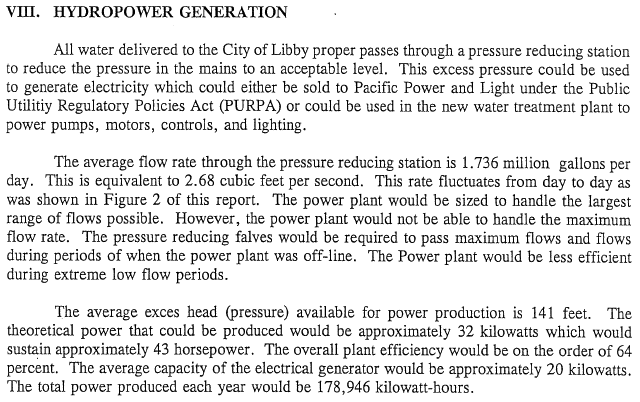16 May 2016
Light Reading is light on Libby hydro facts
It’s not always easy to make sense of the stories published in Light Reading, the two-page newsletter than the Flathead Electric cooperative inflicts on its members. Consider, for example, this report from LR’s May, 2016, issue:
…Flathead Electric Cooperative has signed a two-phase power purchase agreement with the City of Libby for the advance purchase of electricity generated from the city’s hydro-electric generator, located near the water treatment facility in Lincoln County.
Flathead Electric paid the city $122,125 in advance for 2.03 million kilowatt-hours (kWh) of energy to be generated and delivered to the power grid during the first phase, which has an anticipated duration of 13 years.
During Phase 2, Flathead Electric will accept generated energy in exchange for energy delivered to metered accounts already associated with the Libby Water Systems Department.
That’s approximately six cents per kilowatt hour. But did FEC buy a 13-year output that totals two million kilowatt hours? Or is the output two million kWhrs/year? If the former, the hydro plant’s output is around 18 kilowatts. If the latter, the output is approximately 230 kilowatts.
Light Reading does not answer those questions. But a 1993 engineering report (PDF, 19MB) by Morrison-Maierle on Libby’s water system master plan update might:

Page 62.
Morrison-Maierle’s estimate of a 20-kilowatt output is consistent with generating a 13-year total of two million kilowatt hours.
Six cents per kWhr is not an unreasonable price, especially when locked-in for 13 years. But paying the money up front comes at a cost to FEC, and thus to FEC’s members, that ought to be quantified and disclosed. The expected monthly output also ought to be disclosed.
